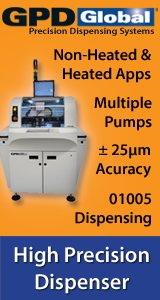Printed Circuit Board Assembly & PCB Design Forum
SMT electronics assembly manufacturing forum.
- SMTnet
- »
- Electronics Forum
- »
- Vapor degreasing cleaning
Vapor degreasing cleaning
Views: 1905
![]() Hi all, (I posted on eevblog also, figured I'd try hear as w...
- Aug 30, 2020
by
kyleh04
Hi all, (I posted on eevblog also, figured I'd try hear as w...
- Aug 30, 2020
by
kyleh04
![]()
![]()
![]() I guess my question would be why are you getting so much/lea...
- Aug 31, 2020
by
dontfeedphils
I guess my question would be why are you getting so much/lea...
- Aug 31, 2020
by
dontfeedphils
![]()
![]()
![]() We are using a spray fluxer. Most of the THT parts are long ...
- Aug 31, 2020
by
kyleh04
We are using a spray fluxer. Most of the THT parts are long ...
- Aug 31, 2020
by
kyleh04
![]()
![]()
![]() I would question your motive "There's no way that I fee...
- Aug 31, 2020
by
Evtimov
I would question your motive "There's no way that I fee...
- Aug 31, 2020
by
Evtimov
![]()
![]()
![]() > I would question your motive "There's no w...
- Aug 31, 2020
by
kyleh04
> I would question your motive "There's no w...
- Aug 31, 2020
by
kyleh04
![]()
![]()
![]() The problem that we have seen applying NC flux (EF2210) at s...
- Sep 01, 2020
by
charliem
The problem that we have seen applying NC flux (EF2210) at s...
- Sep 01, 2020
by
charliem
![]()
![]()
![]() > The problem that we have seen applying NC flux <...
- Sep 03, 2020
by
kyleh04
> The problem that we have seen applying NC flux <...
- Sep 03, 2020
by
kyleh04
![]()
![]()
![]() Not in our case, the pre-heat temp was not high enough. Also...
- Sep 03, 2020
by
charliem
Not in our case, the pre-heat temp was not high enough. Also...
- Sep 03, 2020
by
charliem
![]()
![]()
![]() > Not in our case, the pre-heat temp was not high <...
- Sep 03, 2020
by
kyleh04
> Not in our case, the pre-heat temp was not high <...
- Sep 03, 2020
by
kyleh04
![]()
![]()
![]() We've had to hand solder 1 or 2 pins in cases like this or y...
- Sep 08, 2020
by
charliem
We've had to hand solder 1 or 2 pins in cases like this or y...
- Sep 08, 2020
by
charliem
![]()
- SMTnet
- »
- Electronics Forum
- »
- Vapor degreasing cleaning







